Purifying your water at home is a great way to ensure your drinking water is free of harmful contaminants and impurities, whether you have a well, city water, or use rainwater. It’s also a good idea when you don’t have access to clean water at home, or when camping or in an emergency.
For us, having access to clean, pure, healthy water was a big concern when we moved to our new farm. Not just for drinking, but for showering, cleaning dishes and yes, even watering the garden. One thing was for sure, it was not going to come from the ground beneath our soil.
On our farm, it is impossible to drill a well due to the fact that most of the lands in Eastern Ohio were strip mined back in the day, leaving the ground water less than desirable. Add in that the area is now heavily under the influence of fracking, and the ground water is more suspect than ever.
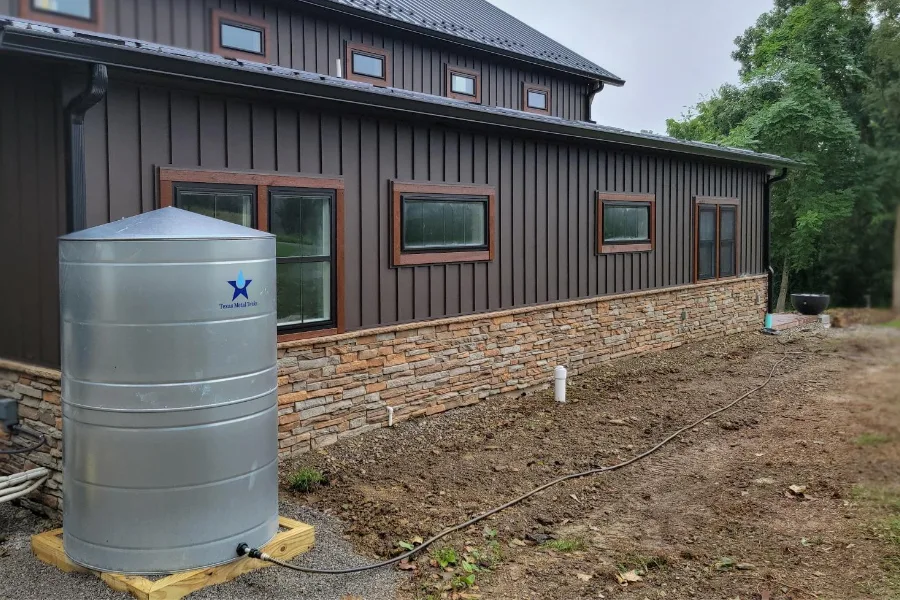
A Solution To Clean Water – How To Purify Water At Home
As the old saying goes, where there is a will, there is a way. For us that “way” is collecting what mother nature brings us from the sky. And then, of course, filtering it to be the cleanest water around!
When we built the new barndominium, cabin house and farm buildings, we used metal roofing to top each building. Not only are metal roofs low maintenance, they are perfect for collecting rain water. There is no need to worry about contamination from asphalt shingles. In addition, the metal collects the water fast and easy.
To collect our water, we use a series of large metal tanks attached to the downspouts around the farm. When we were traveling in Texas a few years back, we fell in love with the look and incredible construction of the Texas Metal Tank company’s rainwater tanks.
The tanks are lined with an epoxy lining that provides a protective barrier between the water and the metal. It is FDA approved for potable (drinking) water applications and is ANSI / NSF 61 certified. Even more, they look great anywhere you place them!
Collecting, Storing & Purifying Our Water At Home
A single rain event at the farm can collect a lot of water! For every one thousand square feet of roof space, we can collect 300 gallons of water from just a half-inch of rain. With a total of four tanks on the property, we can usually collect well over 1000 gallons with just a single rain.
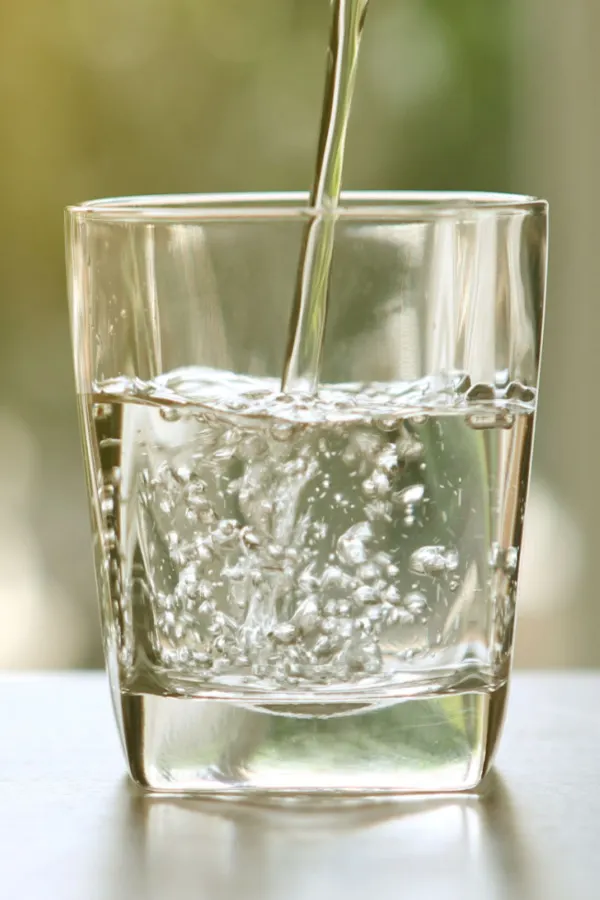
We then pump that water into large in-ground cisterns to store and keep the rain tanks free for the next rain event. All in all, at any point, we try to keep a total of around 10,000 gallons on hand, more than enough for 6 months of use if the rain stopped falling.
In an emergency, we could truck water in to the in-ground cisterns if the need ever arises. Hopefully, with the system we now have in place, we will never have the need. But now that we have the rain water, how do we purify it?
Although our water is filtered for debris as it comes in, we still have to make it safe to drink. There are many different ways to purify your drinking water at home—some are inexpensive, some take more time and effort, but all of them can provide you with safe water to drink.
Which method is best for you depends on your personal needs, resources, and budget. With that in mind, we have included a detailed look below at some of the standard ways to purify water in your home, whether you collect rain water or not.
Making Rainwater Safe To Drink – How We Purify Our Water At Home
So how do we purify our water? Well, for starters, we start with a debris filter before the water gets in the tank. Once the Texas Metal Tanks are full, we then pump them to the cistern. When we do, we pass the water through a charcoal filter for an additional pre-cleaning.
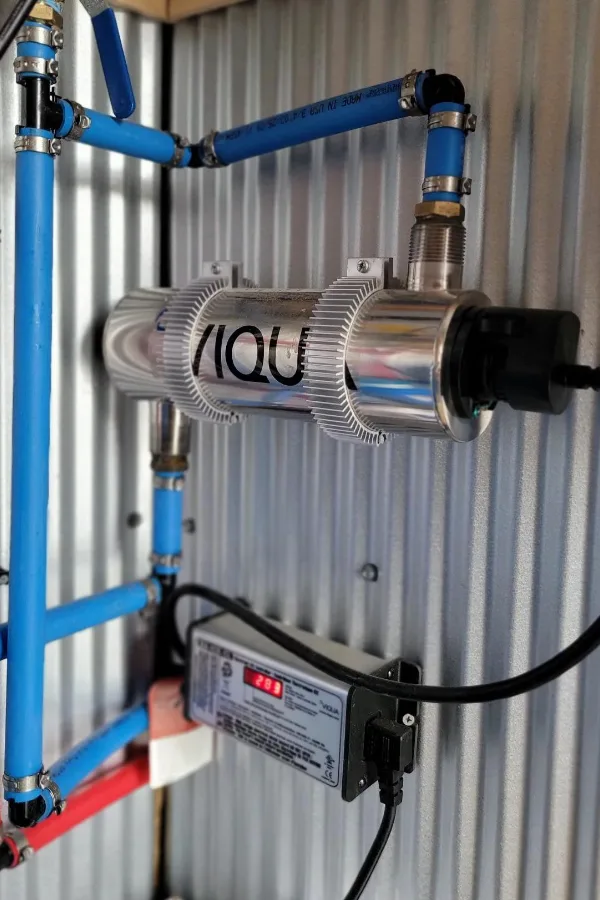
Once in the cistern, our water pump brings the water into the house. It is there that the water passes through a two stage filter and then goes through a UV light system. The UV light kills any an all bacteria that could possibly remain, making it completely safe.
The end result? Crystal clean water that is wonderful to drink or use anywhere we need, including watering our garden! Not everyone of course may be in our situation, so here is a look at some other great ways to purify your drinking water.
Standard Methods For Purifying Water At Home
Distillation
Distillation is the most effective method of purifying your drinking water. In distillation, the water is boiled to create steam, and then that steam rises into a separate container. The vapor then condenses back into purified drinking water. The steam dissolves contaminants and impurities while leaving behind any salt or minerals. This method is one of the more expensive water purification methods, but it’s very effective at removing harmful contaminants like bacteria and chemicals.
Ozone – How To Purify Your Water At Home
This method is inexpensive and can purify your water within minutes. You get an aluminum or stainless steel can, fill it with fresh water, and place it in direct sunlight. Ozone forms ozone gas when the light ultraviolet rays of the sun strike the water, which is created through a chemical reaction.

This gas is highly effective at killing bacteria and viruses that may be in the water, such as salmonella, hepatitis A, and E-coli. Think of it as a portable water purification system that you can use! If you’re going camping or hiking, you should consider bringing a small camping water treatment system.
Big Berkey Water Filter – How To Purify Your Water At Home
This method is perfect for your home or office. It removes bacteria, viruses, and protozoa such as cryptosporidium, giardia, and amoeba. The filter is filled with carbon which acts as a tasteless and odorless granular activated charcoal.
The oversized big berkey water filter removes the chlorine from your water, converts the ions of heavy metals into harmless compounds, and filters out organic contaminants like pesticides and herbicides. The filters also remove VOCs and other impurities. The filter will add many years of service if you change it every six months.
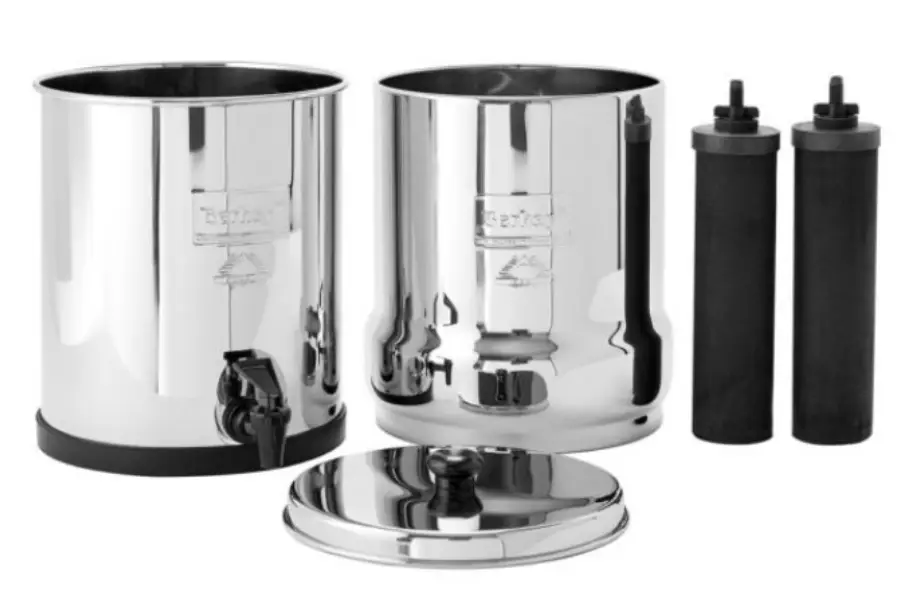
UV lamp purifiers – How To Purify Your Water At Home
This is another excellent method for purifying your drinking water. A UV lamp cleaner uses a particular bulb that produces ultraviolet light. It then bounces it off a reflector onto your water source. This type of purification is an effective and inexpensive way to remove most contaminants and impurities from your water.
You do need to change the lamps every six to twelve months, which can be a little costly over time. But it certainly gives you peace of mind that your water is free of danger.
Boiling – How To Purify Your Water At Home
Boiling is one of the least expensive ways to purify your water, but it does not remove many different contaminants. It will not remove chemicals, pesticides, and herbicides from your water, sediment, and some chemical compounds.
The boiling method will also help you reduce the amount of chlorine in your drinking water, which can be dangerous for people with asthma or other respiratory illnesses. The boiling process also causes the evaporation of any remaining minerals from your water.
Carbon filtration – How To Purify Your Water At Home
Carbon filtration is a very effective way to remove virtually all impurities. It’s a practical, affordable, easy-to-use method that removes chlorine from your water supply. As with any carbon filter, the time between changes will depend on how much sediment the water contains. This water purification method is one of the most economical and versatile methods used around your home or work.
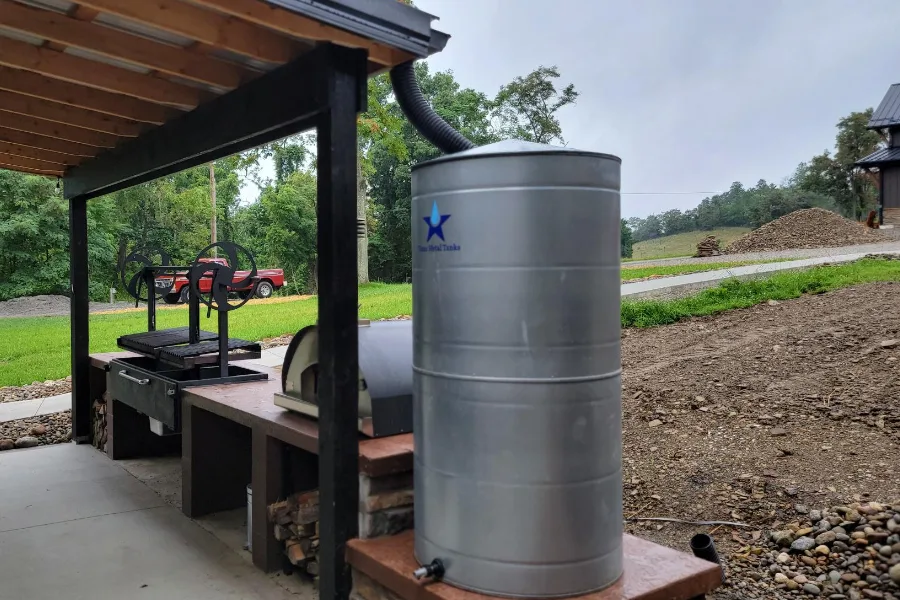
Solar still – How To Purify Your Water At Home
This simple method can be a great way to purify your water during outdoor activities or when you’re in an emergency and have no access to clean drinking water. It can be used for small groups of people, and it’s also helpful in removing salt from your drinking water.
Because this method involves evaporation and condensation, the result will be very fresh-tasting drinking water safe to drink. This process can eliminate bacteria, viruses, and the most harmful contaminants from the drinking water.
Seaside plant purifier
This simple method of purifying your water can be used in a survival situation. It’s cheap to make and effective at removing bacteria, viruses, and biological contaminants from your drinking water. This method will also eliminate salty and bitter tastes from your drinking water and remove the foul odor that can sometimes come with dead fish.
Teabags
You can use a tea bag to filter water easily. Place the tea bags in a large container and add enough water to cover them. Let the tea soak for 30 minutes, then strain the water and drink it. You can use a few tea bags over an extended period if you don’t want to change them out often. You can also use perforated tea filters or coffee filters as an alternative to using other types of teabags.
Charcoal purification – How To Purify Your Water At Home
Charcoal purification is one of the most effective ways to purify your water. The presence of charcoal will absorb any poisonous chemicals and heavy metals from the water. Charcoal also absorbs radioactive isotopes and other impurities present in your drinking water. To create a charcoal filter, you will need to fill a coffee maker or paper filter with activated charcoal.
Safe drinking water can be easy with a water purification system or treating water with alternative methods you might already have. Water is anything but cheap, so it’s crucial to find ways to keep your water supply clean and free from contaminants.
Here is to having access to clean, pure drinking water at home – and plenty of it! Happy Gardening, Jim and Mary
Jim and Mary Competti have been writing gardening, DIY and recipe articles and books for over 15 years from their 46 acre Ohio farm. The two are frequent speakers on all things gardening and love to travel in their spare time.
As always, feel free to email us at thefarm@owgarden.com with comments, questions, or to simply say hello! You can sign up for our free email list in the subscribe now box in the middle of this article. Follow us on Facebook here : OWG Facebook. This article may contain affiliate links.
